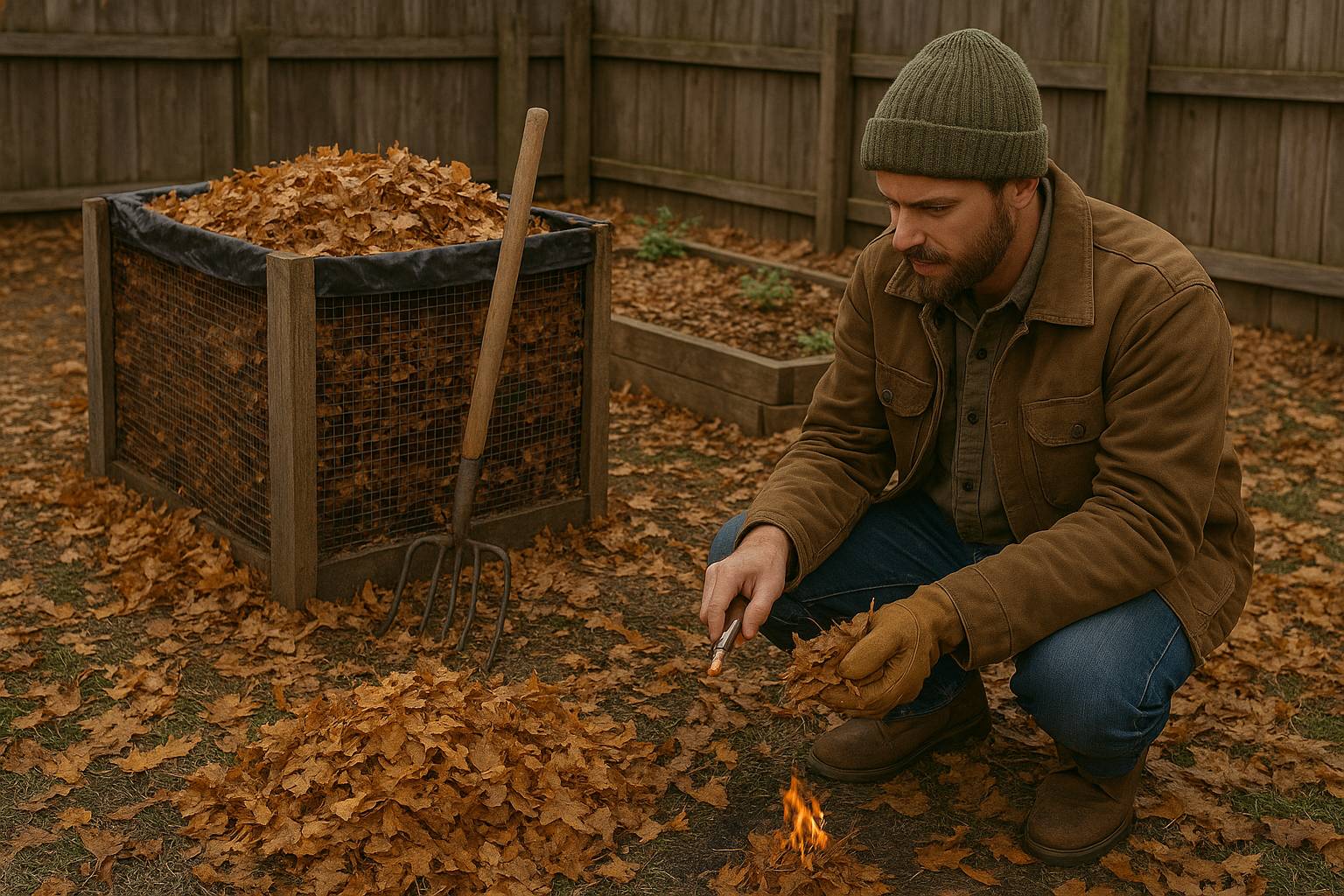Every fall, Canadian yards fill up with piles of fallen leaves—bright golds, fiery reds, and deep browns. Most people rake them up, bag them, and send them off to municipal composting programs or the dump. But for preppers, that’s like throwing away bags of free fertilizer, insulation, and fire-starting fuel.
In a world where every resource counts, those leaves represent more than seasonal clutter—they’re a renewable, sustainable, and completely local resource that can serve dozens of purposes around the homestead. Here are the five best ways to make use of fallen leaves as part of your preparedness and self-reliance plan.
1. Compost Gold: Building Better Soil Naturally
Composting is one of the easiest ways to convert organic waste into valuable nutrients for next year’s garden. Fallen leaves are rich in carbon, the “brown” material every compost pile needs to balance out nitrogen-heavy “green” materials like kitchen scraps, manure, and grass clippings.
By mixing shredded leaves into your compost, you accelerate decomposition and produce a dark, earthy humus that strengthens plant roots and improves soil water retention.
Tips for preppers:
- Shred before use. Whole leaves can mat together, blocking air and slowing breakdown. Use a mower or leaf shredder to speed up the process.
- Layer smartly. Alternate 2 parts leaves to 1 part green waste.
- Winter composting. Even in cold Canadian winters, your compost will keep working slowly. Insulate it with a thick layer of leaves to trap microbial heat.
If your survival plan includes long-term food security, composting leaves is one of the most energy-efficient ways to build fertile soil for future gardens.
2. Natural Mulch and Weed Barrier
Why buy bagged mulch when nature drops it for free? Shredded leaves make an excellent mulch that:
- Retains soil moisture
- Blocks weeds
- Regulates temperature
- Adds nutrients as it breaks down
Spread a 3–4 inch layer of leaf mulch around fruit trees, berry bushes, garlic beds, or perennials before winter sets in. The mulch protects the soil from freeze-thaw cycles and prevents roots from heaving out of the ground.
Prepper bonus: Leaf mulch also provides excellent protection for root cellars or underground food caches. Pile them around the entrance to camouflage and insulate the area.
If you’re working toward off-grid food production, mulching with leaves can reduce watering needs by 30–50% in summer and protect soil from erosion during spring thaw.
3. Livestock Bedding and Barnyard Booster
Leaves are an underappreciated bedding material for small livestock. They’re soft, absorbent, and readily available for free. Chickens, rabbits, goats, and even pigs appreciate the comfort of a thick leaf bed—especially in unheated coops or barns.
When the bedding becomes soiled, you can compost the mixture of manure and leaves to create an ultra-rich organic fertilizer. The carbon in the leaves balances the nitrogen in animal waste perfectly, creating an efficient “deep litter” system.
Prepper tip: Store large bags of dry leaves indoors or under tarps for year-round use. In a long-term grid-down event, it’s a sustainable replacement for sawdust, straw, or commercial bedding—no store trips required.
4. Shelter Insulation and Survival Bedding
In a survival situation, fallen leaves can literally save your life. Dried leaves are one of the best natural insulators available—they trap air pockets that retain heat.
Uses include:
- Emergency bedding: Fill trash bags, cloth sacks, or even clothing layers with dry leaves to create an insulating mattress or sleeping pad.
- Primitive shelter insulation: Stuff leaves between layers of branches, logs, or tarps to keep a lean-to or debris hut warm.
- Insulating root cellars or outbuildings: Pack leaves around cold storage areas, sheds, or makeshift greenhouses for winter protection.
For preppers living in colder regions like Central Ontario, this is especially valuable. When power or fuel runs short, a pile of dry leaves could be the difference between comfort and frostbite.
5. Fire-Starting, Char, and Biofuel Potential
Dry leaves are one of the most versatile fuels in the wild. They ignite easily, burn hot, and can be used to create char material—a form of carbon that’s useful for both filtration and soil improvement.
Fire uses:
- Combine dry leaves with pine needles and twigs for a reliable tinder base.
- Use them to preheat damp kindling in wet conditions.
- When charred in a low-oxygen environment (like a small covered pit or tin), leaves become lightweight biochar—ideal for improving garden soil or filtering water.
Caution: Avoid burning leaves that may have been sprayed with herbicides, pesticides, or road salts. Stick to clean, dry material collected away from traffic or chemicals.
Bonus Use: Camouflage and Concealment
For those thinking tactically, leaves can also serve a defensive role. Piles of dry leaves can break up footprints, cover scent trails, or be used to conceal gear and supplies. In wooded areas, leaf litter can make effective natural camouflage for shelters or defensive positions.
Final Thoughts: From Waste to Wealth
Fallen leaves are a seasonal gift that most people ignore. For preppers, they’re an annual delivery of renewable resources—quietly falling from the trees each autumn, waiting to be used wisely. Whether you’re improving soil fertility, insulating shelters, or ensuring your livestock are comfortable, these natural materials are free, renewable, and incredibly versatile.
So the next time you pick up a rake, don’t think of leaves as waste—think of them as part of your self-reliance toolkit. Because in preparedness, everything that falls from the land can rise again in value.
📘 Book Recommendation:
📗 Acres of Preparedness: Planning the Last Safe Place
A complete guide to building a sustainable and defensible prepper retreat—from land selection to food, energy, and security systems.



